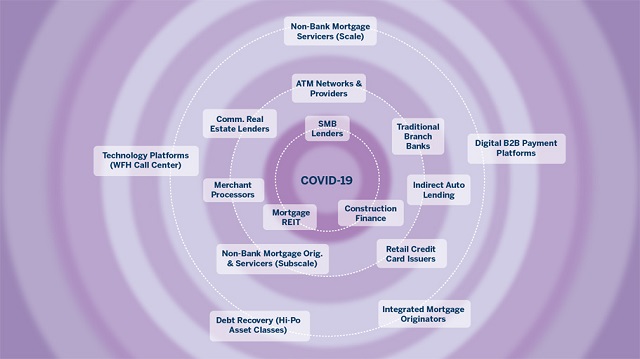The FTI Journal's review of opportunities for private equity in distressed M&A in the pandemic-affected economy looks at the financial services industry.
A number of trends in the financial services industry related to consumer behavior have snowballed since the pandemic began and are quickly accelerating existing market forces. Those companies that place greater emphasis on scale, innovation, analytics and digital transformation will find themselves rewarded.
Among the trends are:
A contact-free economy is on the rise
- Merchant processors who dominate verticals now will gain through rapid growth in online commerce — think online groceries and other product delivery services, bicycle and mobility platforms, and app-enabled ride and food delivery platforms.
- Adoption of P2P payment services like Venmo and PayPal — which take on the role of the consumer's banking and checking accounts — will expand beyond the millennial demographic.
Resilient business models are consolidating markets
- Opportunity exists for investors as consolidation ramps up. Those mortgage servicers (and originators) with integrated asset management as part of their business model will be more resilient, but long-term profitable growth will depend on gaining scale by taking share from weaker competitors who exit the market.
- Debt recovery firms are likely to become a high-potential asset class.

The economic effects of COVID-19 are rippling through the financial services sector.
Industry structure change is concentrating value in select companies
- Potential exists in the United States and other countries to acquire lending platforms with high operational excellence and data analytics, but there is a need to enhance credit underwriting.
The temporary dislocation in asset prices
- Valuations in public firms have declined (some by as much as, or more than, 30% early on). That has resulted in private market opportunities to aggregate distressed firms as a long-term play.
Overall, finding investment opportunities in the financial services segment will require looking beyond near-term effects and identifying how to capture competitive advantage.
The content of this article is intended to provide a general guide to the subject matter. Specialist advice should be sought about your specific circumstances.
